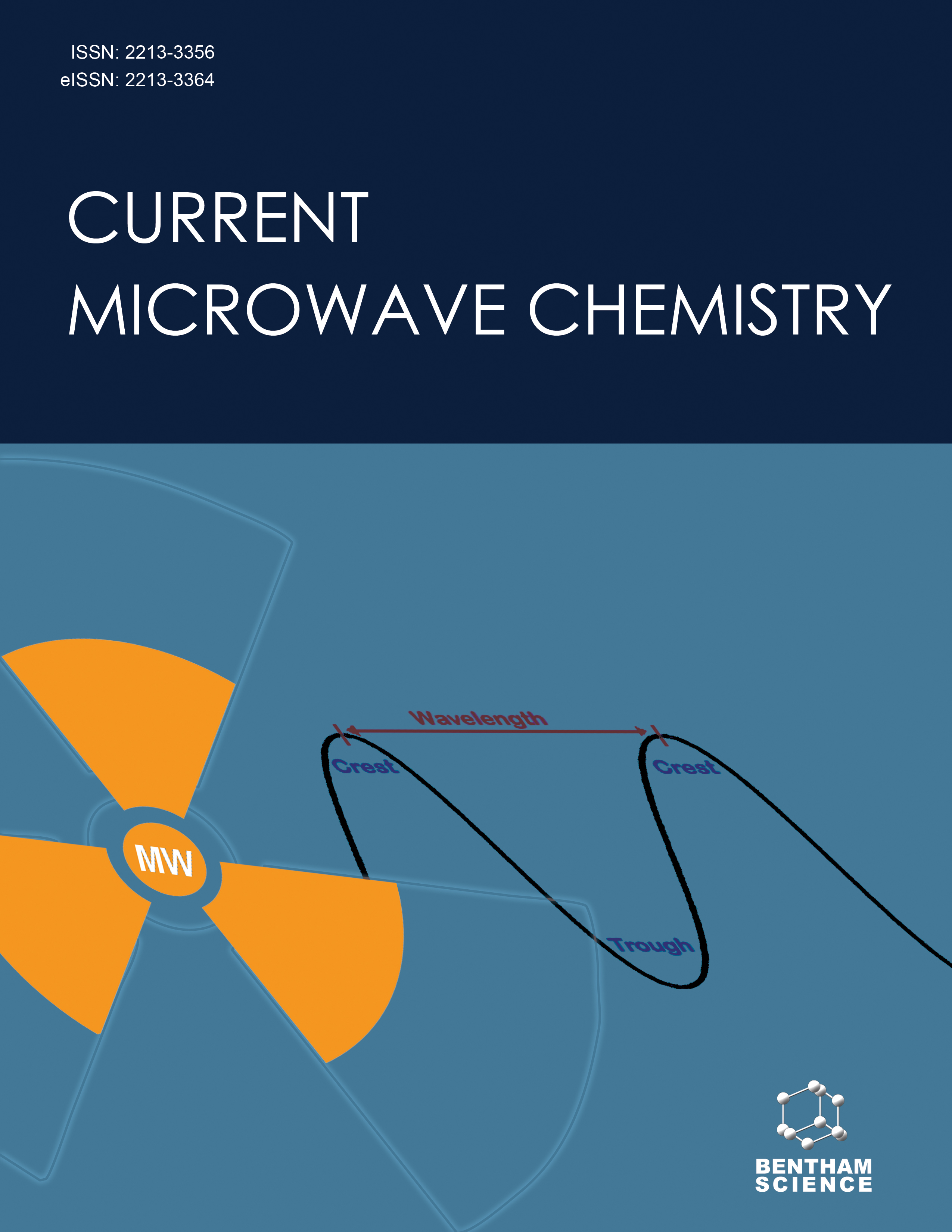- Home
- A-Z Publications
- Current Microwave Chemistry
- Previous Issues
- Volume 4, Issue 1, 2017
Current Microwave Chemistry - Volume 4, Issue 1, 2017
Volume 4, Issue 1, 2017
-
-
Microwave-enhanced Speciation Analysis of Environmental Samples
More LessAuthors: Arabinda K. Das and Ruma ChakrabortyBackground: For acquiring information on accessibility, mobility, chemical behavior and fate of elements, it is necessary to determine their specific chemical species. Relevance of microwave energy for chemical speciation analysis has been extensively investigated over a wide range of applications since more than last three decades. The aim of writing this review would be to discuss salient features of important proced Read More
-
-
-
Use of a Constrained Mixture Design to Optimize a Procedure for Closed Vessel Microwave-Assisted Digestion of Vegetal Leaves
More LessBackground: Reliable analytical methods for metals determination in tea is a demand of the nutritional and toxicological sciences. In this work, a constrained mixture design has been applied to develop an efficient closed-vessel microwave-assisted digestion procedure for Ca, Cu, Fe, K, Mg, Mn, Na, Sr and Zn determination in vegetal leaves used for tea preparation. Methods: The optimization step was carried out using a con Read More
-
-
-
Microwave Assisted Synthesis of Chalcogenides
More LessAuthors: Sabir Ahammed, Debasish Kundu, Nirmalya Mukherjee and Brindaban C. RanuBackground: The microwave reactor has been an important tool in organic synthesis. During last two decades microwave radiation has been successfully used in a variety of reactions including carbon- carbon and carbon-heteroatom bond formation. The application of microwave energy for carbonchalcogen bond formation leading to the synthesis of chalcogenides have been reported by various groups. Considering the i Read More
-
-
-
Comparison of Sample Treatment Methods for Bismuth and Tellurium Determination in Yogurt
More LessBackground: Dairy products are rich in nutrients that are essential for a high bone mineral density. Furthermore, several studies relate additional health benefits to the regular consumption of fermented milk products such as yogurt. However, Te and Bi have been determined in milk samples but there is not available information about Te and Bi determination in yogurt samples. Methods: Three sample treatment approaches in Read More
-
-
-
High Temperature Microwave Oven Treatments
More LessAuthors: Angel Morales-Rubio and Miguel de la GuardiaBackground: A literature survey on the use of High Temperature Microwave Oven Treatments focused on the sample pretreatment of different matrix types, from the digestion of samples with high organic content such as foods, to those with high mineral content such as rocks, and also considering microwave assisted synthesis of products including nanomaterials has been made. From the first application published in 19 Read More
-
-
-
On-Line Microwave Sample Pretreatment for Organic and Inorganic Analyte Determination by Instrumental Techniques: A Review
More LessAuthors: Aline S. Freire, Bernardo F. Braz, Delmo S. Vaitsman and Ricardo E. SantelliBackground: Microwave energy has been used in chemistry for years. Regarding analytical chemistry, microwave energy has been employed for extraction, digestion, reaction, fractionation and speciation of selected analytes from several matrix samples. Within this goal, automation has of concern in these applications. Methods: This review presents some applications of microwave use in flow systems for the determination Read More
-
-
-
The Determination of Acid-Volatile Sulphide in Sediments Using Microwave- Assisted Chemical Vapour Generation: An Alternative to the US EPA Method
More LessBackground: Acid-volatile sulphides (AVS) and simultaneously extracted metals (SEM) have been used as sediment quality criteria in both contaminated or non-contaminated sediments. The AVS/SEM model is based on the criterion that metal toxicity is absent when the sum of the acid-labile divalent metal concentrations ([ΣSEM]) is less than the concentration of acid-volatile sulphides ([AVS]) expressed as a molar ratio. Read More
-
-
-
Microwave-Assisted Synthesis of Benzimidazoles and Their Derivatives From 1994 to 2016-A Review
More LessAuthors: Bahittin Kahveci and Emre MenteseBackground: The use of microwave irradiation is an important development for the synthesis of benzimidazoles in the 21st century, and in recent years, microwave-assisted heterocyclic synthesis has gained significant attention in modern drug discovery studies. Benzimidazoles are an important group in the field of medicinal chemistry because of a wide range of biological activities. This review article provides a collecti Read More
-
-
-
Catalyst-free Straightforward Synthesis of Propargylic Ethers from their Carbonates and Alcohols under Microwaves Irradiation
More LessAuthors: Shiva Kalhor-Monfared, Raja Ben Othman, Claire Beauvineau and Christian GirardBackground: Propargylic derivatives are important reagents and building blocks in organic synthesis. They can be obtained starting with propargylic alcohols or their protected forms. The actual methods rely on the use of acidic or metal-catalyzed approachs. These efficient methods however need to use solvents and metals, that are sometimes toxic or expensive. Ways to prepare those derivatives without metals or solvents c Read More
-
Most Read This Month
Article
content/journals/cmic
Journal
10
5
false
en


